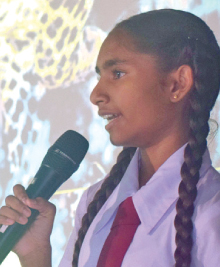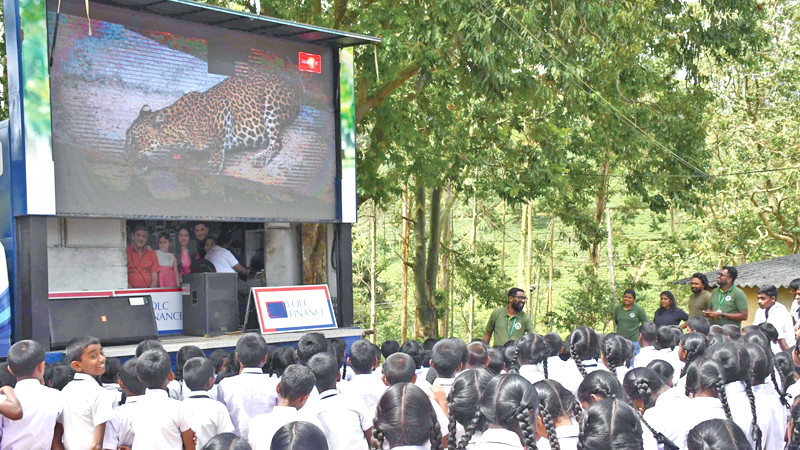The Wildlife and Nature Protection Society (WNPS), LOLC Holdings, and Sirasa TV have launched a nationwide initiative aimed at raising awareness and educating rural communities and schoolchildren about the Sri Lankan leopard’s critical role in biodiversity. This collaboration marks a pivotal step in conserving the threatened Sri Lankan leopard (Panthera pardus kotiya) and fostering a deeper understanding of its protection.

WNPS regional Coordinator from Kotagala delivers her presentation

A student shares her ideas
The Sri Lankan leopard, a unique subspecies found only on the island, plays a vital role in maintaining the ecological balance of natural ecosystems. However, habitat loss, human-leopard conflicts and poaching pose significant threats to its survival. To address these challenges, the WNPS, LOLC, and Sirasa TV have joined forces to launch educational programs designed to teach children and adults the importance of leopards and the need to preserve them for future generations.
Coexistence
This initiative forms an integral part of the 5-year WNPS LOLC Multi-Regional Leopard Conservation Project, which focuses on research, habitat protection, and community engagement to ensure the long-term survival of the Sri Lankan leopard. By combining education, conservation, and research, the program aims to create a sustainable framework for coexistence between humans and leopards across the island.
Co-Chair of the Wildcats Subcommittee of the WNPS Prof. Enoka Kudavidanage said, “Conservation must start at the grassroots level. Educating schoolchildren on coexistence with wild animals, especially leopards, is crucial for building a sustainable future.”
The initiative conducted educational and awareness programs in rural schools and communities, where human-wildlife interactions often lead to conflicts. Held between October and December, these programs aimed to educate students, teachers, and local residents about coexisting with leopards and protecting their habitats.
Twelve programs were rganised through the six regional centres of the “WNPS LOLC Multi-Regional Leopard Research and Conservation Project” in Kilinochchi, Belihuloya, Sigiriya, Kalawana, Kotagala and Panama. These sessions targeted rural school students and communities living near leopard habitats. Morning sessions engaged students, while evening discussions involved local residents, emphasizing the importance of coexistence and addressing misconceptions about leopards.
Apex predators
The initiative’s goals included highlighting the ecological significance of leopards as apex predators, reducing human-leopard conflicts, and offering advice to create safer environments for people and wildlife. By involving schoolchildren, the program aimed to foster a culture of conservation and respect for leopards, ensuring its long-term impact.
Kithsiri Gunawardena of LOLC said, “Educating the younger generation about the importance of coexistence ensures that the values of conservation are deeply rooted in communities.”
Government officers, especially from the Department of Wildlife Conservation, played a critical role in the success of these programs. Their expertise bridged the gap between local communities and national conservation goals, enhancing the credibility and effectiveness of the initiative.







